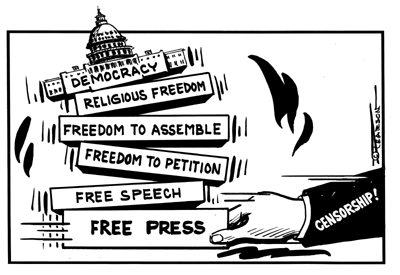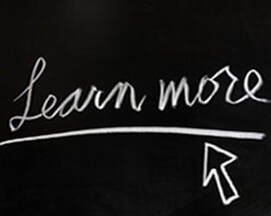Educating for Democracy: Free Press
“The free press is a cornerstone of democracy. People have a need to know. Journalists have a right to tell. Finding the facts can be difficult. Reporting the story can be dangerous. Freedom includes the right to be outrageous. Responsibility includes the duty to be fair. News is history in the making. Journalists provide the first draft of history. A free press, at its best, reveals the truth.” -- Inscribed at the Newseum, Washington, D.C.
Step 1: Hook (5 minutes)
Step 1: Hook (5 minutes)
The graphs above show how much and how often we now rely on social media. Get your class engaged in the topic by doing a show-of-hands survey -- how many have used Facebook? Twitter? Instagram? and which students decline to use social media at all?
Step 2: Videos and Other Teacher Resources
|
|
Students can view the video from Reporters Without Borders (left), and read the full story at Fast Company magazine.
Video from Quartz digital magazine: "People in China are using song lyrics as code to voice support for Hong Kong." Case Studies: "How to Teach Controversial Cartoons" Political satire: "Jon Stewart Returns to Shame Congress: The Daily Show" |
Step 3: Standards Aligned Exercises - Free Press

Vocabulary Exercise
Create a list highlighting how journalists have been finding alternative pathways to sharing their voices.
Students can explore the World Press Freedom Index and then compare and contrast freedom of the press in various countries.
Write the phrase, FREEDOM OF SPEECH AND DEMOCRACY on a large piece of paper at an easel. Students should write a phrase, or create a drawing describing the relationship between freedom of speech and democracy.
Create a list highlighting how journalists have been finding alternative pathways to sharing their voices.
Students can explore the World Press Freedom Index and then compare and contrast freedom of the press in various countries.
- What kinds of media will get you censored on, for example, the Internet in China? Activity: Print this flowchart, and ask students to determine whether their tweets, blog posts, or podcast would be singled out for censorship. Follow-up with written answers on this worksheet. In what ways did this activity deepen, change, challenge, or further students' understanding of censorship as it relates to the freedom of press and expression?
- Students should choose one of the journalists from the 10 Most Urgent Press Freedom Cases and write a tweet about their cause. Students can display their tweets in a gallery using a tweet simulator.
Write the phrase, FREEDOM OF SPEECH AND DEMOCRACY on a large piece of paper at an easel. Students should write a phrase, or create a drawing describing the relationship between freedom of speech and democracy.
Students should analyze the political cartoon, and think about the following questions:
|
Step 4: What Can Students Do?
|
Students will express how freedom of the press is an essential element in promoting and preserving democracy by completing one of the following:
|
Additional Resources
|
AFT Resources
|







